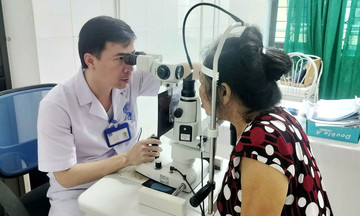Katherine Hanan, a 21-year-old medical student in the UK, has always been slim without ever dieting or exercising rigorously. She shares that she eats whatever she wants and has never struggled with weight management.
"I'm really lucky, and my friends hate me for it," she jokes.
In 2019, Katherine participated in a unique study conducted by the BBC. In this experiment, she and 9 other volunteers, all naturally thin individuals with no history of dieting, were asked to double their daily food intake, ranging from 3,500 calories for women to 5,000 calories for men, while minimizing physical activity. For 4 weeks, they consumed pizza, ice cream, chocolate, and chips, and refrained from exercising or walking more than 5,000 steps per day.
Some participants gained weight quickly, while others experienced almost no change. Some gained 4-5 kg, primarily muscle mass, not fat. Two individuals couldn't even finish their daily calorie intake; their bodies seemingly rejected additional calories. This experiment highlighted the role of genetics and basal metabolic rate, where each person appears to have a unique "biological threshold" for weight. The reason for the volunteers' inability to gain weight remains unclear, but scientists have repeatedly suggested congenital generalized lipodystrophy (CGL) as a possible factor.
CGL is a rare genetic disorder that prevents the body from storing subcutaneous fat from birth. Individuals with CGL often have a muscular physique, prominent muscles, and a thin face. This lack of fat not only affects appearance but also causes severe hormonal and metabolic imbalances, including fatty liver disease, high blood triglycerides, and early insulin resistance.
Studies estimate the prevalence of CGL to be approximately 1 in 10 million people. The condition is usually diagnosed during infancy or adolescence, with symptoms including an enlarged liver, unusually muscular physique, and early signs of metabolic disorders.
CGL is primarily caused by mutations in two genes: AGPAT2 (CGL1) and BSCL2 (CGL2). AGPAT2 is responsible for triglyceride synthesis in fat cells. When this gene is mutated, cells cannot store fat, resulting in the absence of subcutaneous fat tissue. Meanwhile, BSCL2 encodes the protein seipin, a crucial component in the formation of stable fat droplets within cells. Without seipin, fat cannot be stored properly and is broken down prematurely.
CGL is inherited in an autosomal recessive pattern, meaning an individual must inherit two copies of the faulty gene, one from each parent, to develop the condition. Genetic testing can help identify children at risk early, facilitating timely medical intervention.
Without adipose tissue, the body loses its ability to regulate hormones like leptin, which controls hunger and metabolism. Consequently, individuals with CGL are prone to insulin resistance, type 2 diabetes at a very young age, high blood triglycerides, fatty liver disease, and severe lipid disorders. Some studies have reported a risk of acute pancreatitis, early cardiovascular disease, and even liver failure if metabolic disorders are not properly managed.
Beyond physical effects, CGL also negatively impacts patients' mental health. The unusual appearance combined with severe metabolic disorders can lead to depression and chronic anxiety.
CGL is diagnosed based on clinical presentation (absence of subcutaneous fat), blood lipid tests, liver function tests, and confirmed by genetic sequencing. Imaging techniques such as liver ultrasound and DEXA scans for fat density also aid in diagnosis.
 |
A person eating pizza in Dublin, Ireland. Photo: Reuters. |
A person eating pizza in Dublin, Ireland. Photo: Reuters.
There is currently no cure for CGL. Treatment primarily focuses on managing symptoms. Metreleptin, a synthetic form of leptin, is used to improve blood sugar and lipid control, and is a rare drug approved by the FDA for CGL patients.
In addition, patients are often prescribed a combination of diabetes medication, statins to lower blood lipids, and advised to follow a low-fat diet and undergo regular liver function monitoring. Alongside medical treatment, psychological support and nutritional management are also crucial for improving patients' quality of life.
Cases of individuals unable to gain weight, despite eating a lot, have helped scientists better understand the essential role of adipose tissue in homeostasis, hormonal regulation, and overall metabolic health.
CGL demonstrates that adipose tissue is not just "excess baggage," as many people believe, but an organ with distinct endocrine functions. Research on the AGPAT2 and BSCL2 genes has also paved the way for gene therapy, currently in clinical trials in Europe.
From a societal perspective, understanding this syndrome helps dispel the misconception that "thin is healthy" and emphasizes that ideal weight depends on more complex biological factors than simply calories consumed versus calories expended.
Thuc Linh (According to BBC, ABC, NCBI)












